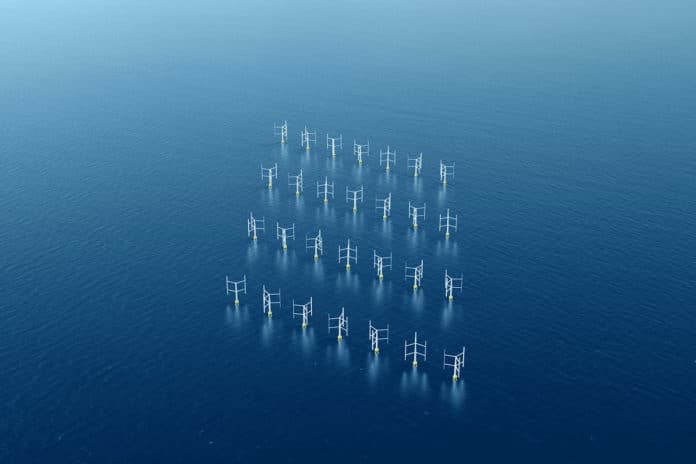Despite the impacts of COVID-19, 2020 was a record year for the global wind power industry, but this growth is not sufficient to ensure the world achieves net-zero by 2050. According to the Global Wind Report 2021, the world needs to be installing wind power three times faster over the next decade in order to meet net-zero targets and avoid the worst impacts of climate change.
Modern wind farms are one of the most efficient ways to generate green energy. However, they have one major drawback. As the wind approaches the front row of turbines, turbulence occurs downstream. It negatively affects the performance of subsequent rows.
In other words, the front row will convert about half of the wind’s kinetic energy into electricity, while for the back row, this number drops to 25-30%.
Wind farms containing more compact and efficient vertical turbines, commonly used for small-medium installations, could, in the future, replace traditional propeller wind turbines. New research from Oxford Brookes University has found that the vertical turbine design is far more efficient than traditional turbines in large-scale wind farms. In addition, when installed in pairs, the vertical turbines increase each other’s performance by up to 15%.
A research team from the School of Engineering, Computing, and Mathematics (ECM) at Oxford Brookes led by Professor Iakovos Tzanakis used more than 11,500 hours of computer simulation to study wind power in-depth. According to their findings, wind farms can perform more efficiently by substituting the traditional propeller-type Horizontal Axis Wind Turbines (HAWTs) for compact Vertical Axis Wind Turbines (VAWTs).
The research demonstrates, for the first time at a realistic scale, the potential of large-scale VAWTs to outcompete current HAWT wind farm turbines.
The VAWTs rotate around an axis that is vertical to the ground, as opposed to the HAWT. The research has shown that VAWTs enhance each other’s performance when arranged in a grid. Positioning wind turbines to maximize outputs is critical to the design of wind farms.
“This study evidences that the future of wind farms should be vertical,” said Professor Tzanakis. “Vertical axis wind farm turbines can be designed to be much closer together, increasing their efficiency and ultimately lowering the prices of electricity. In the long run, VAWTs can help accelerate the green transition of our energy systems so that more clean and sustainable energy comes from renewable sources.“
